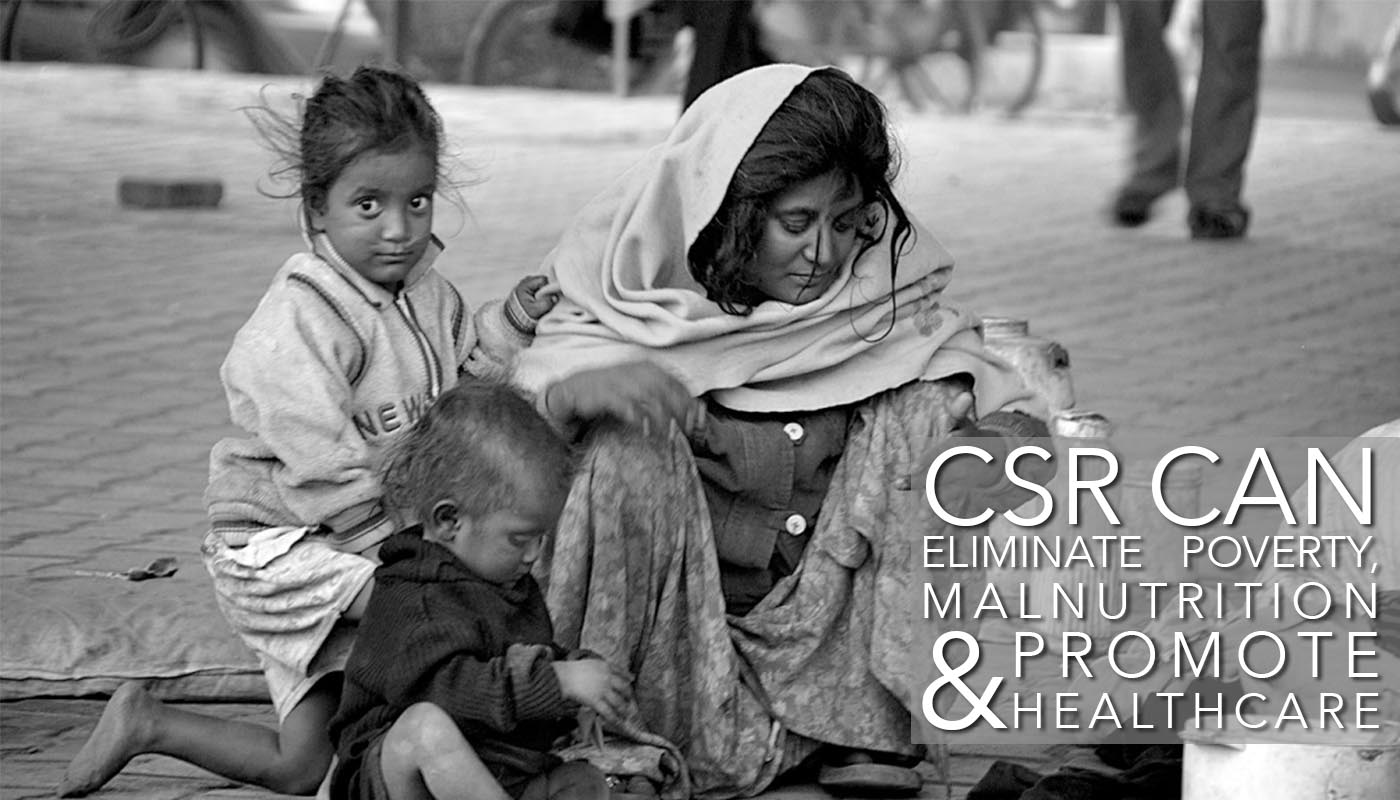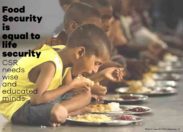WHAT IS POVERTY ?
Poverty refers to a situation when people are deprived of basic necessities of life. It is often characterized by inadequacy of food, shelter and clothes. In other words, poverty refers to a state of privation where there is a lack of essential needs for subsistence. Poor people are presumed to be depressed and deprived. They do not get proper nutrition and diet. Their conditions have not sufficiently improved even after over long 65 years of our independence.
Causes of poverty
POOR AGRICULTURE
India is mainly an agricultural country. About 80% people of the country depends on agriculture. Farmers of our country are poor and uneducated. They do not know the modern methods of farming. They have no good facilities of irrigation. They do not get seeds and fertilizers on time. Thus, the yield is poor. Agriculture is not profitable today. So, poor agriculture is one of the causes of India’s poverty. Some reasons for this situation are as follows:
- Population Pressure:
- Uneconomic Holdings:
- Uncertain Monsoons and Inadequate Irrigation Facilities:
- Subsistence Nature of Farming:
- Decline in Soil Fertility:
- Lack of Support Services:
- Poor Organisation of Resources and Lack of Entrepreneurship:
GROWING POPULATION
Our population is growing rapidly. But our resources are limited. The growth in population creates problems for us. Today, our population is 1.20 billion; tomorrow we will be 1.21 billion and so on. We need more food, more houses, and more hospitals for them. So, tomorrow we might not have more money to spend on development projects. The ever growing rate of population must be checked. If not, we may not be able to remove India’s poverty.
CORRUPTION AND BLACK MONEY
There is corruption in every walk of life. There is inefficiency in offices. People have become selfish. They neglect the national interests. Black money causes the problem of inflation/ rising prices. Some people have all the privileges. But many others are suffering. Black money affects our economy and as a result causes poverty. The implications are global. As the West and India work more closely together, corruption in India risks spilling over into partner systems. By cleaning up India, Indians are not only reclaiming their own country, they are making the world a more stable place. For anyone interested in lasting global security, it’s important to understand how India has ended up where it is today, and what Indian civil society is fighting for.
EFFECTS OF POVERTY
- Illiteracy- Poor people constitutes greater share of illiterate population. Education becomes extremely difficult when people are deprived of basic necessities of life.
- Child labor- In India, a large number of young boys and girls are engaged in child labour.
- Nutrition and diet- Poverty is the leading cause of insufficient diet and inadequate nutrition. The resources of the poor people are very limited, and its effect can be seen on their diet.
- Poor living condition and housing problems- They don’t get proper living conditions. They have to fight the hardship of poverty to secure food, clothes and shelter. A large number of poor families live in one room only.
- Unemployment- Poor people move from villages to towns and from one town to another in search of employment/work. Since, they most of them are illiterate and unskilled, there are very few employment opportunities open for them. Due to unemployment, many poor people are forced to live an unfulfilled life.
- Hygiene and sanitation- These people have little knowledge about hygiene and proper sanitation system. They are not aware of the harmful consequences of not maintaining proper hygiene. The government is taking initiatives to make available clean and safe water and proper sanitation system to them.
- Feminization of poverty- Women are the worst victims of poverty. Poverty effects greater number of women than men. The total of poor women outnumbers the total population of poor men. The causes include low income, gender inequality, etc. They are deprived of proper diet, medicines and health treatment.
- Social tensions- Poverty is often characterized with income disparity and unequal distribution of national wealth between the rich and the poor. Concentration of wealth in the hands of few rich people lead to social disturbances and revolts. Fair or even distribution of wealth leads to an overall improvement in general standard of living of the people.
WHAT EXACTLY IS MALNUTRITION ?
Malnutrition is a health condition where a person consumes nutrients in an excessive, insufficient, or in an imbalanced way. This can harm many vital organs and functions of your body. Lack of food is the most common cause of malnutrition in developing and underdeveloped countries.
WHAT CAUSES MALNUTRITION ?
- Lack of a balanced diet
- Indigestible and harmful diet
- Lack of a regulated diet
- Dirty environment
- Lack of sound sleep and rest
- Negligence of children
- Bodily diseases
- Heavy work
- Lack of food
- Dysphagia
- Elderly living alone
- Ignorance of pregnant mothers
- Poverty
- Illiteracy and Ignorance
- No access to hospitals
EFFECTS OF MALNUTRITION
- Extreme loss of adipose tissue
- Difficulty in breathing , with the person suffering from frequent respiratory failures
- Difficulty to recuperate after a surgical procedure
- Depression
- Extremely low body temperatures
- A dip in the white blood cell count
- Frequent infections and delayed recovery
- Delayed wound healing
- Low libido
- Irregular menstrual cycles
- Extreme levels of fatigue and tiredness
- Irritability and anxiety
- Extremely dry skin and scalp
PROBLEMS OF HEALTH SERVICES
- Neglect of rural population- A serious drawback of India’s health service is the neglect of rural masses. It is largely a service based on urban hospitals. Although, there are large no. of PHC’s and rural hospitals yet the urban bias is visible. According to health information 31.5% of hospitals and 16% hospitals beds are situated in rural areas where 75% of total population resides.
Moreover the doctors are unwilling to serve in rural areas.The acute shortage of doctors in India, especially in rural areas, is a nuisance for the government, a problem that has not been successfully tackled till now.Even the new government’s latest decision to introduce one-year compulsory rural service as a part of the postgraduate medical course is not without its flaws. This is opposed on the ground that for one year, the PG students would be deprived of studying, acquiring skills that would help them later practice as a specialist. Inadequate, inequitable distribution of the medical workforce remains a challenge across the globe, and India is no exception.Since public funded medical students are not motivated to serve in rural settings, increasing the number of places or establishing new medical institutions may not be an effective solution to the issue. Approaches such as extended clinical apprenticeship in rural health facilities, long-term community engagement during medical studentship could be considered.some of the other solutions are:-
- Emphasis on cultural method: The health system of India depends almost on imported western models. It has no roots in the culture and tradition of the people. It is mostly service based on urban hospitals. This has been at the cost of providing comprehensive primary health care to all. Otherwise speaking, it has completely neglected preventive, promotive,rehabilitative and public health measures.
- Shortage of medical personnel.
- In India shortage of medical personnel like doctors, nurses etc, is a basic problem in the health sector. In 1999-2000, while there were only 5.5 doctors per 10,000 population in India, the same is 25 in the USA and 20 in China. Similarly the number of hospitals and dispensaries is insufficient in comparison to our vast population.
- Medical research: Medical research in the country needs to be focused on drugs and vaccines for tropical diseases which are normally neglected by international pharmaceutical companies on account of their limited profitability potential.The national health policy 2002 suggests to allocate more funds to boost medical research in this direction.
- Expensive health service: In India, health services especially allopathic are quite expensive. It hits hard the common man.Prices of various essential drugs have gone up. Therefore more emphasis should be given to the alternative systems of medicine. Ayurveda, Unani and Homeopathy systems are less costly and will serve the common man in a better way. Concluding, the health system in our country has many problems. These problems can be overcome by effective planning and allocating more funds to the health care programs which ultimately have the trickle down effect .
- Lack of healthcare related resources: Migration of qualified professionals, Workforce concentrated in urban areas, limited opening hours, limited availability of drugs, poor physical environments,poor provider training and knowledge are some other limitations.
CSR can take these initiatives
- CSR can create centres of excellence for health+ nutrition policy research.
- CSR can make health centres which provide free health facilities to the poor people.
- CSR can provide vocational training and education facilities to the poor people free of cost.
- CSR can make canteens at many places like Amma Unavagam for people to serve food at low prices so that malnutrition problems among people can be removed.
- CSR can also provide funds for medical research so that it can reduce limitations related to research expenses.
- CSR can provide infrastructures at various health centres and hospitals which reduce infrastructure problems.
- CSR can reduce availability of drugs problems.
- CSR can contribute in solving agricultural problems by providing fertilizers and seeds to the farmer which can improve food production of our country.
jnicsr #jnicsrtimes #nikhilkumarsarojaz







2 Comments
ร้านปริ้นเอกสาร
August 25, 2025 at 10:52 pm127472 994712Thanks – Enjoyed this post, can you make it so I receive an email when you make a fresh post? From Online Shopping Greek 593484
https://Glassiindia.Wordpress.com/
August 28, 2025 at 11:37 amI do aghree with all the ideas you’ve offered to your post.
They’re very convincing and will cergainly work.
Nonetheless, the posts are too short for newbies. May you please extend them a little from subsequent
time? Thanks for tthe post. https://Glassiindia.Wordpress.com/